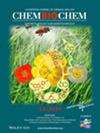人工肽作为自噬调节剂。
IF 2.8
4区 生物学
Q3 BIOCHEMISTRY & MOLECULAR BIOLOGY
引用次数: 0
摘要
自噬是维持细胞稳态的高度保守的溶酶体降解途径。它的失调与多种疾病有关,包括癌症、神经变性和感染,这使得精确调节自噬成为一种潜在的有前途的治疗策略。基于人工肽的自噬调节剂已经成为传统小分子的一种有前途的替代品,在特异性、生物相容性和功能多功能性方面具有多种优势。本文综述了近年来基于人工肽的自噬监测工具、自噬诱导剂和自噬抑制剂的研究进展。本文章由计算机程序翻译,如有差异,请以英文原文为准。

Artificial Peptides as Autophagy Modulators
Autophagy is a highly conserved lysosomal degradation pathway for maintaining cellular homeostasis. Its dysregulation is implicated in various diseases, including cancer, neurodegeneration, and infections, making precise modulation of autophagy a potentially promising therapeutic strategy. Artificial peptide-based autophagy modulators have emerged as a promising alternative to conventional small molecules, offering several advantages in terms of specificity, biocompatibility, and functional versatility. This review summarizes recent advances in artificial peptide-based autophagy monitoring tools, autophagy inducers, and autophagy inhibitors.
求助全文
通过发布文献求助,成功后即可免费获取论文全文。
去求助
来源期刊

ChemBioChem
生物-生化与分子生物学
CiteScore
6.10
自引率
3.10%
发文量
407
审稿时长
1 months
期刊介绍:
ChemBioChem (Impact Factor 2018: 2.641) publishes important breakthroughs across all areas at the interface of chemistry and biology, including the fields of chemical biology, bioorganic chemistry, bioinorganic chemistry, synthetic biology, biocatalysis, bionanotechnology, and biomaterials. It is published on behalf of Chemistry Europe, an association of 16 European chemical societies, and supported by the Asian Chemical Editorial Society (ACES).
 求助内容:
求助内容: 应助结果提醒方式:
应助结果提醒方式:


